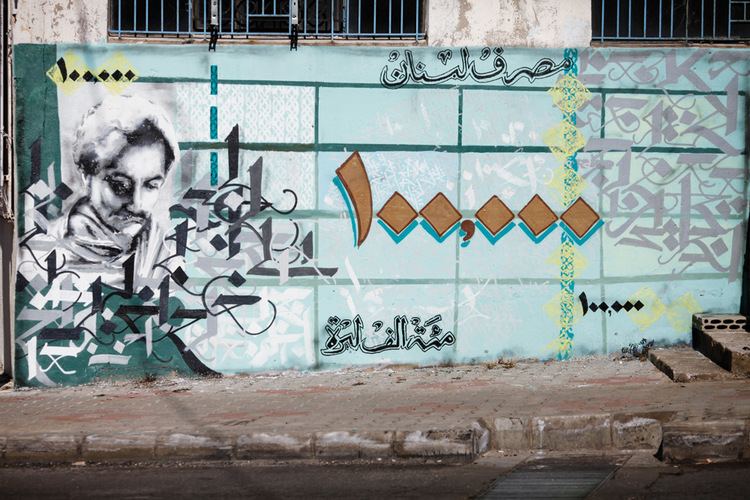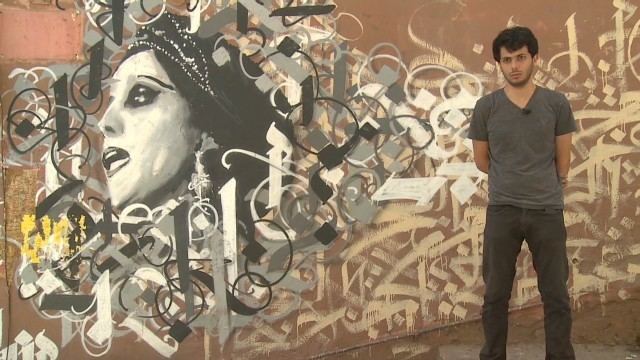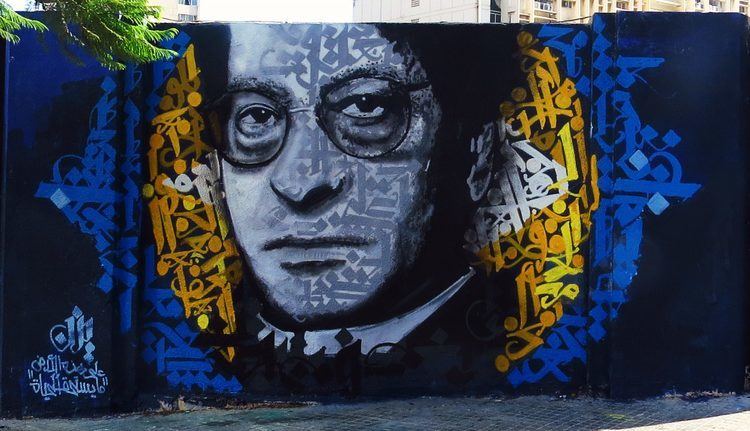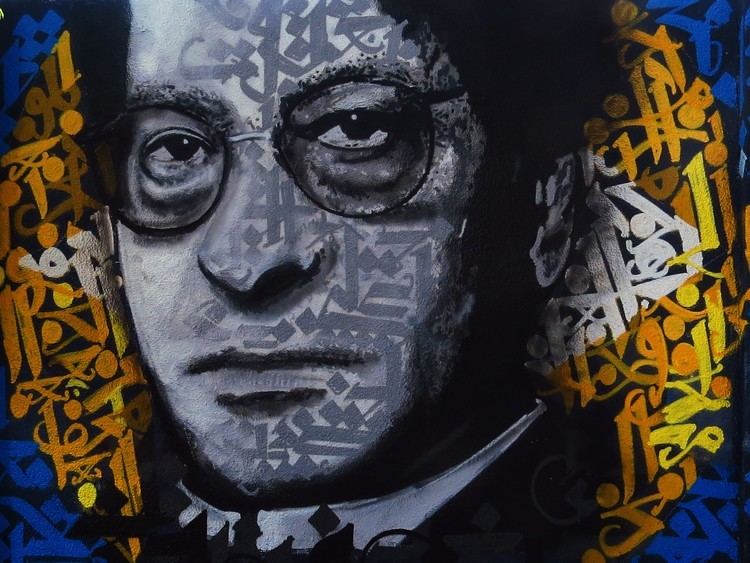Nationality Lebanese | Name Yazan Halwani | |
 | ||
Known for Street art, Arabic Calligraphy Profiles | ||
Yazan halwani eternal sabah beirut
Captation des performances des artistes graffeurs meen one yazan halwani et jonone
Biography

Yazan Halwani was born on the 17th May 1993 in Beirut, Lebanon. The Lebanese Civil War had taken its toll on the city, and large parts of the city were destroyed. In 2007, Yazan started experimenting with graffiti after being influenced by French Hiphop music, notably IAM (band). In 2011, Yazan decided to change his style and create a mural style that is independent of the west, by leveraging Arabic calligraphy and portraits of Arab people. He frequently reports that his shift in style was accompanied by a shift in attitude: "Graffiti has a strong connotation of vandalism, but in my city most people do vandalism: Lebanese Civil War, corrupt politicians. This is why I try to make my murals a constructive expression of the city."
Contents
- Yazan halwani eternal sabah beirut
- Captation des performances des artistes graffeurs meen one yazan halwani et jonone
- Biography
- Artwork and Style
- Exhibitions
- References
Artwork and Style

Yazan’s calligraffiti style uses Arabic letters to form intricate, modern and stylized Arabic calligraphy compositions that are an essential element of his art work. His calligraphy does not focus on the meaning of the words but on their shape, movement, or the composition: traditional Arabic calligraphy for him has always been formed by the meaning of the words (usually excerpts from the Koran, poems, or sayings) and the shape of the calligraphy; Yazan challenges tradition by removing the meaning of the words to focus solely on the task of the calligrapher. Hence his calligraphy is used as a "pixel" for a portrait, a way to note music, or a way to show movement.
Yazan was initially influenced by the western hip hop and graffiti scene from the USA and Europe. But living in the Middle-East, he soon turned his attention to Middle Eastern art and Arabic calligraphy through an Arabic calligraphy book that his uncle shared with him. Yazan subsequently evolved his style to paint images, words and letters that have an oriental touch and inspiration. Another distinctive element of Yazan’s art is the focus on portraits as a central element within a mural or a painting In addition to his murals, the artist has recently started installing sculptures made of cement on the street.

Yazan’s murals are characterized by their size, themes and portraits that include portraits of Arab and Lebanese artists, cultural icons, and faces of Arabs.

His biggest murals is a full building painted with the portrait of Lebanese singer Sabah at the heart of Hamra, Beirut, on a building that housed before the Lebanese Civil War the Horseshoe cafe, a popular hangout for Arab artists and writers such as Paul Guiragossian, Nizar Qabbani and Mahmoud Darwish. Another mural in Germany that attracted international attention was entitled "The Flower Salesman" which depicts a Syrian child called Fares that used to sell flowers in Beirut and died during the Syrian Civil War.
Biography

Yazan Halwani was born in Beirut, Lebanon. The Lebanese Civil War had taken its toll on the city, and large parts of the city were destroyed. In 2007, Yazan started experimenting with graffiti after being influenced by French Hiphop music, notably IAM (band). In 2011, Yazan decided to change his style and create a mural style that is proper to the Arab world. He frequently reports that his shift in style was accompanied by a shift in attitude: "Graffiti has a strong connotation of vandalism, but in my city most people do vandalism: Lebanese Civil War, corrupt politicians. This is why I try to make my murals a constructive expression of the city."
Artwork and Style
Yazan’s calligraffiti style uses Arabic letters to form intricate, modern and stylized Arabic calligraphy compositions that are an essential element of his art work. His calligraphy does not focus on the meaning of the words but on their shape, movement, or the composition: traditional Arabic calligraphy for him has always been formed by the meaning of the words (usually excerpts from the Koran, poems, or sayings) and the shape of the calligraphy; Yazan challenges tradition by removing the meaning of the words to focus solely on the task of the calligrapher. Hence his calligraphy is used as a "pixel" for a portrait, a way to note music, or a way to show movement.
Yazan was initially influenced by the western hip hop and graffiti scene from the USA and Europe. But living in the Middle-East, he soon turned his attention to Middle Eastern art and Arabic calligraphy through an Arabic calligraphy book that his uncle shared with him. Yazan subsequently evolved his style to paint images, words and letters that have an oriental touch and inspiration. Another distinctive element of Yazan’s art is the focus on portraits as a central element within a mural or a painting In addition to his murals, the artist has recently started installing sculptures made of cement on the street. The sculptures, inspired by the heavy use of cement in Beirut, write Arabic words that integrate to the city in an organic manner. The artist that these sculptures is the way he imagines "the city would speak" if it did.
Yazan’s murals are characterized by their size, themes and portraits that include portraits of Arab and Lebanese artists, cultural icons, and faces of Arabs. Through his murals, he achieves the objective of painting a positive image of the city of Beirut. Yazan’s famous walls in Beirut include a wall in Gemmayzeh street that represents a portrait of Lebanese artist and cultural icon Fairouz. Yazan Halwani also painted a portrait of Ali Abdullah, a homeless man that used to live on Bliss street.
His biggest murals is a full building painted with the portrait of Lebanese singer Sabah at the heart of Hamra, Beirut, on a building that housed before the Lebanese Civil War the Horseshoe cafe, a popular hangout for Arab artists and writers such as Paul Guiragossian, Nizar Qabbani and Mahmoud Darwish. Another mural in Germany that attracted international attention was entitled "The Flower Salesman" which depicts a Syrian child called Fares that used to sell flowers in Beirut and died during the Syrian Civil War.
